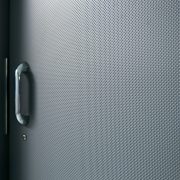Bathroom Stall Installation: How to Install Commercial Bathroom Stall Doors
Whether you’re updating your facility’s bathroom, or you’re setting up the bathrooms in a new building, there are many steps to take to make sure you’re properly installing the bathroom stall doors. You’ll want secure and stable materials that can endure the process, but also last for a long time so you don’t need to worry about continual maintenance.
Choosing the Right Materials
The beginning steps of the installation process begin with the materials you choose. Many bathroom stalls are made of solid plastic (HDPE), baked enamel, stainless steel, phenolic plywood, or solid color reinforced composite. While there are many options in materials it is important to understand which material will perform the best in a restroom environment.
In commercial restrooms, humidity and moisture are unavoidable and are always-present factors that can have a negative effect on these different materials. Stainless steel and baked enamel can begin to rust after being surrounded by moisture for a long time. Due to the composition of Phenolic it is susceptible to mold and mildew growth. When mold grows, it can result in foul odors that can be difficult to get rid of. When mold is present inside these stalls, you’ll need to find a suitable replacement. You can avoid the foul odors, mold growth, and drop in air quality by choosing a material like HDPE (high-density polyethylene). This high performance solid plastic features a durable construction that’s resistant to scratches, dents, graffiti, and moisture, providing a long lasting partition for your facility’s restroom.
Planning, Design, and Installation
It’s important to follow guidelines when it comes to planning your facility’s restroom. You should adhere to ADA guidelines to ensure your restroom and its partitions are easily accessible. The restrooms should also be well lit with protective fixtures that are easy to supervise and are fitted with vandal-proof covers.
When it comes to the actual stalls and partitions, there are a few things to consider with installation. There are three different layouts to choose from for your facility; floor mounted overhead braced, ceiling hung and floor to ceiling. Floor mounted overhead braced provided the most economical solution for high traffic areas where durability is top priority. Easy installation in new construction or existing buildings makes this a versatile style option. Each factory drawing is unique depending on manufacturer so it’s important to make sure you understand the drawings and abbreviations used.
Once you understand the dimensions and drawings in a typical restroom design with pilasters and doors you most likely will begin your installation with installing side and back wall brackets. The next step you will take is to attach your pilasters to the floor. The last step is to install your hinges and doors.
If you follow the correct design plans and guidelines, restroom partition and stall door installation in your facility should be relatively easy, and using the right materials will ensure that the partitions will be long-lasting and beneficial for both you and your facility’s occupants.






